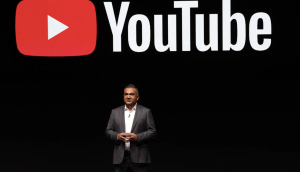Call them enablers, BFFs or info brokers, marketers will be playing a whole new role in consumers’ lives by 2020, according to some of yesterday’s panelists at the CMDC Conference ’09. Closing the day’s conference at the Metro Toronto Convention Centre, attended by some 700 media delegates, panelists shared views on what the world will be like 10 years from now, and the new role that media agencies will play.
From voice-activated mechanisms to the centralization of identity through SIM cards, more in-depth user info will offer unprecedented levels of data portability and content accessibility from everywhere, at all times.
‘The web will be everywhere,’ says Joe Strolz, VP digital media sales at Canwest Digital Media. ‘All will be plugged into the Internet 10 years from now; you won’t be watching TV, you’ll be watching a digitized device.’
Whether connected through SIM cards – which would be on consumers 24/7, allowing them to be recognized by the web – or through ‘info brokers,’ which act as media operators with which consumers would share info ranging from the relatively benign (like age and gender) to things like SIN numbers, medical records and drug consumption, consumers will make the decision to relinquish privacy. ‘One thing everyone will have in the year 2020 is an ‘enabler,” says Ian Busch, brand manager at Hellmann’s, describing a device that would contain all personal data.
‘We’re already exposing all these pieces of information that we typically believe to be very private,’ says Matt Devlin, account director, communication planning & digital at ZenithOptimedia. ‘Consumers of the future have a demonstrable willingness to expose themselves, to be transparent, to share their personal data in exchange for value, and they’ve been doing it for years,’ says Devlin. ‘They’ve been doing it to collect Petro Points and Air Miles, use Hotmail, access financial and medical services. So it’s not new.’
‘There’s going to be a changing of the guard, from the hands of the brands to the hands of the consumer,’ says Jammie Ogle, supervisor, communications strategies at M2 Universal. ‘The consumer will not only access content when they want, but where they want and how they want. In 2020 the consumer is going to be its own program director.’
Through the centralization of data, consumer information can be accessed from either their home, their handheld device or from their office. ‘We’re going to see ads become limitless’ says Ogle. ‘We’re also going to have endless targeting opportunities. We’ll see products seamlessly integrated into programming. An ad on TV can be clicked on get information not just about the product but about the consumer.’
‘Fragmentation as we know it today is going to continue to grow, and this increased growth of niche platforms is going to allow for multiple targeting options,’ adds Ogle. ‘We’re going to be able to track user engagement through multiple platforms; we’ll no longer use one methodology per medium – the whole plan will be monitored through the same methodology. This whole community is going to allow for entertainment, and in the end, convergence.’
Asked by 2020 panel moderator Bruce Neve, president of Mediaedge:cia, how media agencies will change in the future, a joking Neil Cameron, associate director at Excelerator Media responded: ‘For once, creative agencies are going to be under us,’ later adding, ‘creative agencies are going to have to be smarter in the content-building area.’
But predicting the path from 2009 to 2020, especially given the economic instability’s impact on the near-term fate of media, proved a little harder.
Earlier in the day, Paul Godfrey, president and CEO of the National Post expressed concern about predicting the future of digital media monetization during a recession. ‘I think you have to be careful to draw conclusions at this point,’ said Godfrey during a discussion among CEOs, moderated by Scott Cuthbertson, VP and director at TD Newcrest, who asked how media can make a business out of online content. ‘We’ve got to be able to really focus on what’s going to happen in a normal period of time,’ said Godfrey, hinting that major transformation is in store for the print medium, from being a newspaper to news gatherer or collector. ‘Part of the solution with respect to print is, can the public expect to get content free forever? This is going to be a challenge, there’s no doubt about that.’
Keynote speakers at the conference also discussed digital’s impact on the ideation process. ‘Digital has to be at the centre of what we do,’ said Michael Roth, chairman and CEO, Interpublic Group, explaining that global marketing and communications companies no longer look to outside agencies to incorporate digital for clients, but make it part of their in-house offerings.
And the fact that some of the most successful networks are no longer creating content that isn’t malleable enough to become cross-platform confirms the digital dominance. ‘We no longer green-light anything unless it has franchise potential,’ said Dave Howe, president, Sci-Fi Channel, NBC Universal, which as a specialty channel reached top-five network status in the US in 2008. Shows like Battlestar Galactica and Eureka are also integrated into video games, branded content, podcasts and webisodes.
Howe also shared a case study illustrating the net’s current brand integration strategy. Eureka, a show about a town full of geniuses who are a braintrust for the US government, last year integrated Degree For Men deodorant into the script, including a Degree Lab and a character who is based on the Degree brand’s values. ‘It’s more than product and logo placements,’ said Howe.
Curiously, as of July 7, Sci-Fi will be known as ‘the SyFy,’ a re-branding effort to better distinguish the brand from the genre and be more in line with its efforts to reach the mainstream consumer. Fitting, given our near future’s resemblance to Philip K. Dick’s worlds (envisioned in films like Minority Report), is also coming closer to reaching the masses.























